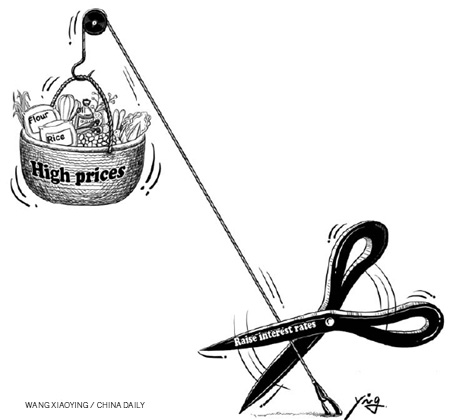Normalize monetary policy

The recent rise in China's inflation has grabbed the attention of the public and policymakers alike. Consumer price inflation rose to 4.4 percent in October and a further increase is expected. This is higher than we are used to in China, although it is modest in an emerging market perspective. To determine the best policy response to the rise in inflation it is important to know its cause and how much inflation we should expect in the coming 12 months. It is also good to decide what an acceptable rate of inflation is for a country like China.
So far, the rise in inflation is because of higher food prices. The food component of the consumer pice index in October was up 10.1 percent year-on-year, contributing two-thirds of overall inflation, while non-food prices were up 1.6 percent on this basis. In looking for the cause of the higher food prices, monetarist explanations are common.
After the massive monetary expansion since the end of 2008 there is a lot of liquidity sloshing around, potentially putting upward pressure on prices, especially asset prices. In this setting, there are reports that speculative activity has driven up prices of several food products.
It is also true that in the long run sustained monetary expansion drives up inflation. However, the link from money to inflation is more indirect and complex than simplistic monetarist interpretations suggest and, in the meantime, inflation is basically determined on the markets for goods and services.
Several food markets have been buffeted by domestic supply shocks. In particular, vegetable prices, which have seen the largest price rises, have been hit by bad weather and natural disasters. Recent hikes in international food prices have added pressure. China's rice and wheat prices do not closely follow international prices, since they are managed by policymakers.
 0
0 







Go to Forum >>0 Comments